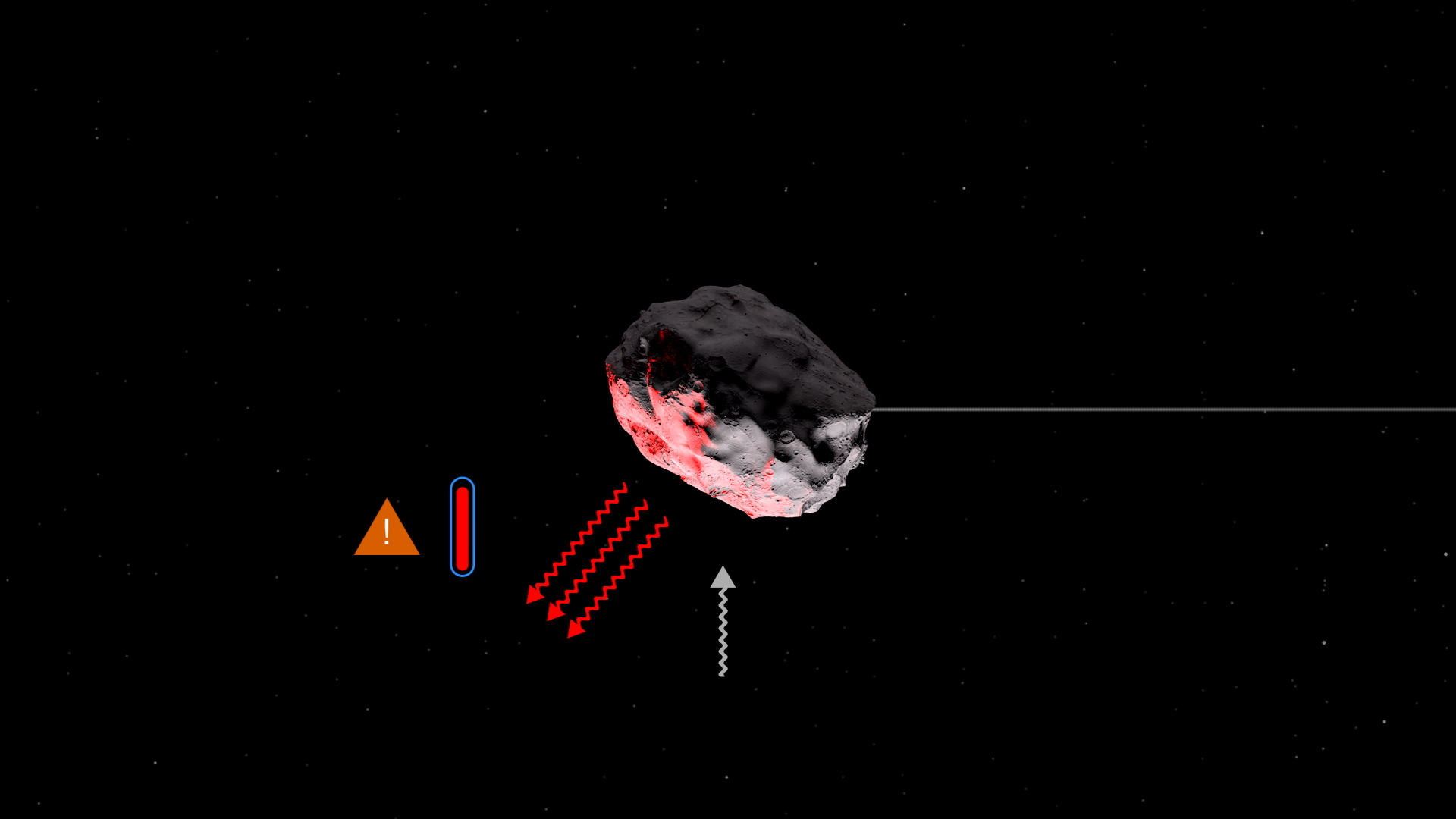OSIRIS-REx Stow Success Media Telecon
NASA hosted a media teleconference at 4 p.m. EDT Thursday, Oct. 29, to provide an update on the status of the agency’s Origins, Spectral Interpretation, Resource Identification, Security, Regolith Explorer (OSIRIS-REx) spacecraft and the mission’s work to safely stow the sample it collected from asteroid Bennu.
The OSIRIS-REx spacecraft made a dramatic six-second touch of Bennu on Oct. 20, and video released the next day indicated a significant number of particles were agitated on Bennu’s surface and collected in the spacecraft’s Touch-And-Go Sample Acquisition Mechanism collector head. Over the following days, the team worked ahead of schedule to stow the primordial cargo for return to Earth in September 2023.
During the teleconference, OSIRIS-REx team members discussed how the stowage process had gone, what else they had learned about the sample, and what the next steps are for the mission to return the sample to Earth.
1. Burns - Sample Mass Measurement
This animation shows the OSIRIS-REx spacecraft performing the Sample Mass Measurement (SMM) maneuver. To execute the SMM, the spacecraft extends its sampling arm and engages its reaction wheels to reach and maintain a steady spin.
Credit: NASA/Goddard/CILab
1. Freund - Sample Stow Animation
This animation shows the initial steps of the OSIRIS-REx spacecraft’s procedure for stowing the sample. The sequence begins with opening the Sample Return Capsule (SRC) and goes through placing the collector head onto the capture ring.
Credit: NASA/Goddard/CILab
2. Freund - StowCam Stow
Taken on Oct. 27, this imaging sequence shows NASA’s OSIRIS-REx spacecraft successfully placing its sample collector head into the Sample Return Capsule (SRC). The sequence begins with the collector head hovering over the SRC after the Touch-And-Go Sample Acquisition Mechanism (TAGSAM) arm and moving it into the proper position for capture. At the end of the sequence, the collector head is secured onto the capture ring in the SRC. A few particles can also be seen escaping from the capsule.
The image sequence was captured by the StowCam camera. StowCam, a color imager, is one of three cameras comprising TAGCAMS (the Touch-and-Go Camera System), which is part of OSIRIS-REx’s guidance, navigation, and control system. TAGCAMS was designed, built and tested by Malin Space Science Systems; Lockheed Martin integrated TAGCAMS to the OSIRIS-REx spacecraft and operates TAGCAMS.
Credit: NASA/Goddard/University of Arizona/Lockheed Martin
3. Freund - StowCam Pull Test
Captured on Oct. 28, this image sequence shows NASA’s OSIRIS-REx spacecraft performing the “backout check.” This maneuver commanded the Touch-And-Go Sample Acquisition Mechanism (TAGSAM) arm to back out of the capsule, and is designed to tug on the collector head. The backout check confirmed that the latches which keep the collector head in place are well secured.
The image sequence was captured by the StowCam camera. StowCam, a color imager, is one of three cameras comprising TAGCAMS (the Touch-and-Go Camera System), which is part of OSIRIS-REx’s guidance, navigation, and control system. TAGCAMS was designed, built and tested by Malin Space Science Systems; Lockheed Martin integrated TAGCAMS to the OSIRIS-REx spacecraft and operates TAGCAMS.
Credit: NASA/Goddard/University of Arizona/Lockheed Martin

4. Freund - Stow TAGSAM Detached
Taken on Oct. 28 by NASA’s OSIRIS-REx spacecraft, this image shows the collector head after it was separated from the Touch-And-Go Sample Acquisition Mechanism (TAGSAM) arm. The collector head is secured onto the capture ring in the Sample Return Capsule.
The image was captured by the StowCam camera. StowCam, a color imager, is one of three cameras comprising TAGCAMS (the Touch-and-Go Camera System), which is part of OSIRIS-REx’s guidance, navigation, and control system. TAGCAMS was designed, built and tested by Malin Space Science Systems; Lockheed Martin integrated TAGCAMS to the OSIRIS-REx spacecraft and operates TAGCAMS.
Credit: NASA/Goddard/University of Arizona/Lockheed Martin
5. Freund - StowCam SRC Close
Captured on Oct. 28, this imaging sequence shows NASA’s OSIRIS-REx spacecraft completing the final step of the sample stowage process: closing its SRC. To seal the SRC, the spacecraft closes the lid and then secures two internal latches. The sample of Bennu is now safely stored and ready for its journey to Earth.
The image sequence was captured by the StowCam camera. StowCam, a color imager, is one of three cameras comprising TAGCAMS (the Touch-and-Go Camera System), which is part of OSIRIS-REx’s guidance, navigation, and control system. TAGCAMS was designed, built and tested by Malin Space Science Systems; Lockheed Martin integrated TAGCAMS to the OSIRIS-REx spacecraft and operates TAGCAMS.
Credit: NASA/Goddard/University of Arizona/Lockheed Martin

1. Lauretta - OSIRIS-REx Stow Team Photo
The OSIRIS-REx mission team celebrates as they receive confirmation that the spacecraft’s sample return capsule was successfully closed. The stow sequence was successfully completed on Oct. 28 from the Mission Support Area at Lockheed Martin Space in Littleton, CO.
Credit: Lockheed Martin

2. Lauretta - Mission Operations Timeline
This graphic provides an overview of the OSIRIS-REx mission operations timeline from 2016 to 2025. The mission has completed sample stow and will now begin preparing for the Earth Return Cruise.
Credit: NASA/Goddard/University of Arizona/Lockheed Martin
Credits
Please give credit for this item to:
NASA's Goddard Space Flight Center
-
Producer
- James Tralie (ADNET Systems, Inc.)
-
Presenters
- Lori S. Glaze (NASA/HQ Planetary Science)
- Dante Lauretta (The University of Arizona)
- Rich Burns (NASA/GSFC)
- Sandra Freund (Lockheed Martin)
-
Support
- Nancy Neal-Jones (NASA/GSFC)
- Erin Morton (The University of Arizona)
- Heather Roper (The University of Arizona)
- Brittany Enos (The University of Arizona)
-
Technical support
- Aaron E. Lepsch (ADNET Systems, Inc.)
Release date
This page was originally published on Thursday, October 29, 2020.
This page was last updated on Wednesday, May 3, 2023 at 1:44 PM EDT.
